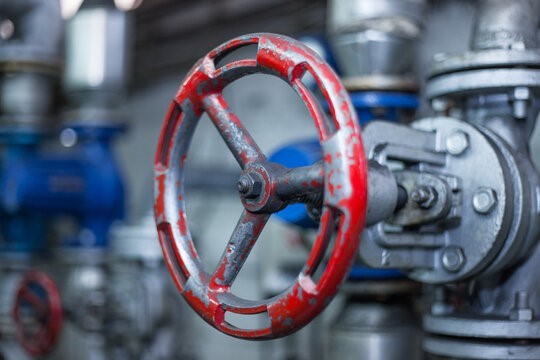Gate valves are one of the most common types of shut-off valves used in various engineering systems. They play a key role in controlling the flow of liquids and gases and provide reliable shut-off in pipelines. In this article, we will explore a detailed description of gate valves, their structural features, as well as their main advantages and disadvantages in different systems.
Detailed Description of Gate Valves
A gate valve is a device designed to completely shut off or open the flow of media in a pipeline. The main structural feature of gate valves is the presence of a shut-off element in the form of a disc or wedge that moves perpendicular to the flow, providing its closure or opening. Gate valves can be made from various materials, including cast iron, steel, stainless steel, and other alloys, depending on the operating conditions and type of working media.
Main Components of a Gate Valve:
- Body: Made from durable materials, it protects the internal components of the valve and ensures its tightness.
- Shut-off Element: A disc or wedge that moves up and down to open or close the flow.
- Stem: Connects the shut-off element to the actuator and transmits the force for its movement.
- Actuator: Can be manual (in the form of a handwheel) or automatic (electric, pneumatic, or hydraulic) and is used to control the position of the shut-off element.
Advantages of Gate Valves
Gate valves have several advantages that make them indispensable in various engineering systems:
- Reliable Shut-off: They provide complete flow shut-off, which is important for preventing leaks and ensuring system safety.
- Minimal Hydraulic Resistance: In an open state, gate valves create virtually no resistance to flow, contributing to efficient system operation and reduced energy costs.
- Durability: Made from robust materials, gate valves have high resistance to wear and corrosion, ensuring a long service life.
- Versatility: Suitable for use in various media, including water, oil, gas, and chemicals.
- Wide Range of Sizes: Available in various sizes, allowing them to be used in pipelines of different diameters.
Disadvantages of Gate Valves
Despite their numerous advantages, gate valves have some disadvantages that should be considered when selecting and operating them:
- Slow Operation: The process of opening or closing a gate valve can take considerable time, which may not be convenient in emergency situations.
- Limited Regulation Capability: Gate valves are not designed for precise flow regulation, as they work best in fully open or closed positions.
- Large Size: Gate valves take up more space compared to other types of shut-off valves, which can be a limitation in confined spaces.
- Risk of Jamming: If left in one position for an extended period, the shut-off element can jam, making further movement difficult.
- Complex Repair: Repairing and maintaining gate valves can be labor-intensive and require significant time and resources.
Application of Gate Valves in Various Systems
Gate valves are widely used in various industries and municipal systems:
-
Water Supply and Sewage
- Gate valves are used to control water flows in water supply and sewage systems. They are installed on main lines and local networks to ensure reliable shut-off and prevent leaks.
-
Oil and Gas Industry
- In the oil and gas sector, gate valves are used to control the flow of oil and gas in pipelines and storage tanks. They provide high tightness and resistance to aggressive environments, important for preventing accidents and leaks.
-
Chemical Industry
- Gate valves are used in the chemical industry to control the flow of various chemicals. They provide reliable shut-off and prevent leaks, crucial for protecting equipment and the environment.
-
Energy Sector
- In the energy sector, gate valves are used in steam supply, cooling systems, and other processes related to energy production and distribution. They ensure reliable media flow control and contribute to the efficient operation of energy installations.
Conclusion
Gate valves are an important component of many engineering systems, providing reliable and efficient control of liquid and gas flows. Their advantages, such as reliable shut-off and minimal hydraulic resistance, make them indispensable in various industries. However, when selecting gate valves, it is important to consider their disadvantages and operational features to ensure reliable and safe system operation. Modern technologies and materials allow for the creation of gate valves with improved characteristics, opening up new possibilities for their application in the most complex and demanding tasks.
